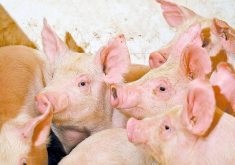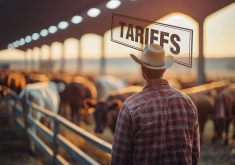Reuters / Brazil’s northeast is suffering its worst drought in decades, threatening hydro power supplies in an area prone to blackouts and potentially slowing economic growth in one of the country’s emerging agricultural frontiers.
Lack of rain has hurt corn and cotton crops, left cattle and goats to starve to death in dry pastures and cut sugar cane production by 30 per cent. Thousands of subsistence farmers have seen their livelihoods wither away in recent months as animal carcasses lie abandoned in some areas that have seen almost no rain in two years.
Read Also

Horns aren’t unlocking anytime soon on livestock transport standards
Standards good enough meet the definition of “humane” animal transportation still vary widely between what what industry wants, what animal rights advocates want and, between the two, what federal regulators decide is good enough.
“We are experiencing the worst drought in 50 years, with consequences that could be compared to a violent earthquake,” said Eduardo Salles, agriculture secretary in the northeastern state of Bahia.
Low water levels have hydro dams operating at one-third capacity, setting off alarm bells in a country with a history of energy shortages that crimped economic growth as recently as a decade ago.
President Dilma Rousseff has dismissed talk of an energy crisis, calling the idea of Brazil potentially needing to ration energy “ridiculous.” However, there have been some signs of strain already. In October, the northeast experienced its worst blackout in more than a decade, knocking Bahia state’s important petrochemical industry offline.
Even with likely crop losses in the northeast, Brazil still expects an overall record soybean and strong corn harvest this season thanks to sufficient rainfall over the main centre-west and southern producing areas.














